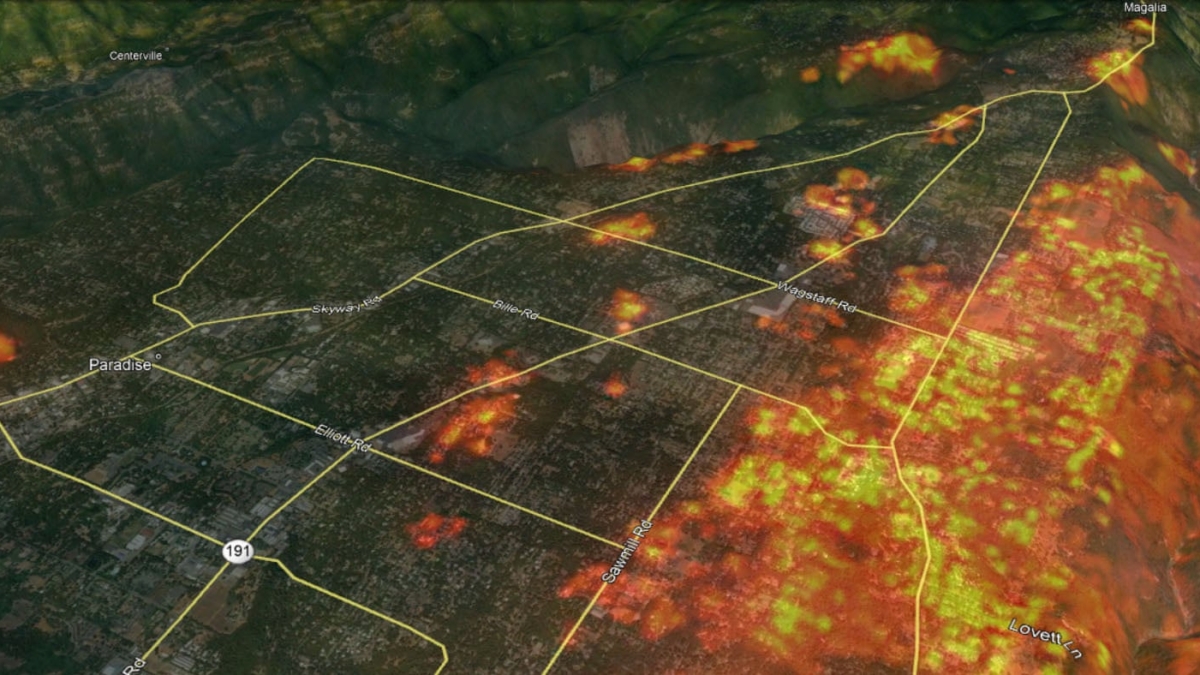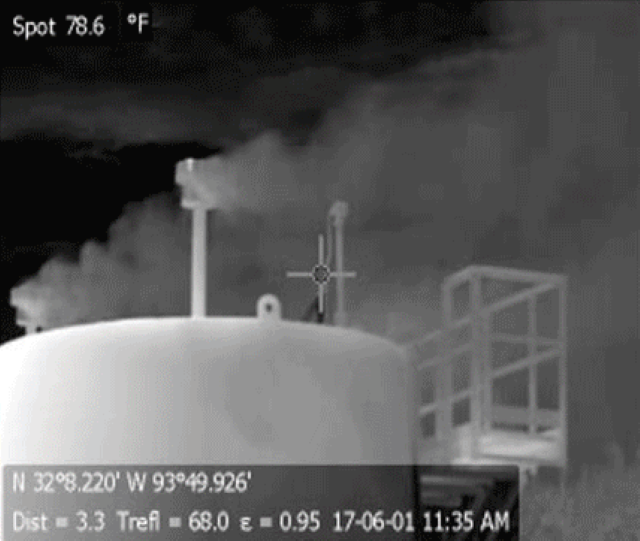Hawaii’s warmest summer on record and Alaska’s second warmest in 2019

By Christopher C. Burt
10 September 2019
(Weather Underground) – Although 2800 miles of open ocean separate them, both Anchorage, Alaska and Honolulu, Hawaii experienced their warmest climatological summers (June-August) on record this year. It appears that this was Alaska’s second warmest summer (following that of 2004) but it is likely that it was Hawaii’s warmest. It is hard to confirm this outcome, since NOAA does not provide average temperatures for Hawaii as a whole (the only state they don’t do such for). However, data for a handful of specific sites—Honolulu, Hilo, Lihue, and Kahului—make a strong case that this summer’s heat across Hawaii has been unprecedented.
Here’s a closer look at the summer temperature records set in Hawaii (and Alaska in less detail).
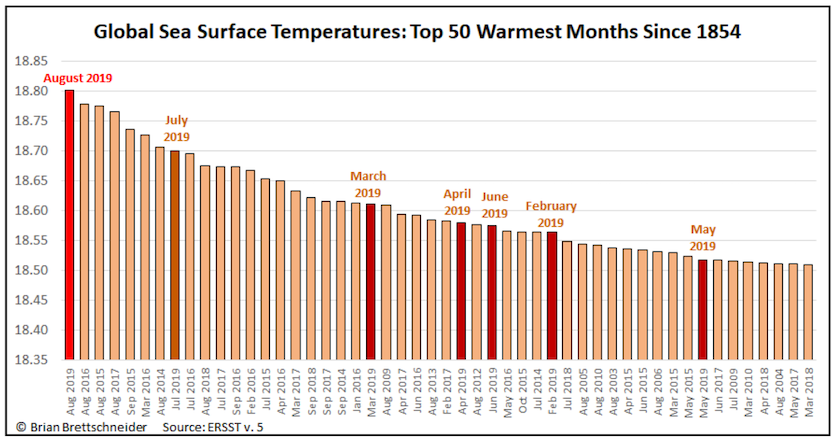
The Summer of 2019: Hawaii
[…] Of the 92 days of summer (June 1-Aug. 31), 29 saw daily record highs set or tied. A total of 37 daily “max/min” records (warmest daily low temperature) were set, including minimums of 81° on Aug. 2, 3, and 26 that tied the all-time records for such (set on three other occasions in August and September 2015). On September 5 the all-time max/min temperature record was broken when a daily low of 82° was observed. […]
Why has it been so hot in Hawaii this summer?
The simple answer is that the sea surface temperatures have been running about 1.0°C-1.5°C (1.8°F-2.7°F) above average this past summer. As noted above, that is enough to push land temperatures (especially at sites near the ocean as all of the four listed above are) into record-breaking territory. The local press has also mentioned (anecdotally) that the normally brisk trade winds have been weaker this summer than usual, allowing the air temperature to climb higher than is normally seen and allowing heat to build near the top of the ocean surface.
September is usually the warmest month for the state, both for sea surface temperatures and land locations, and so far (as of September 8) record temperatures (both daily highs and lows) has continued unabated.
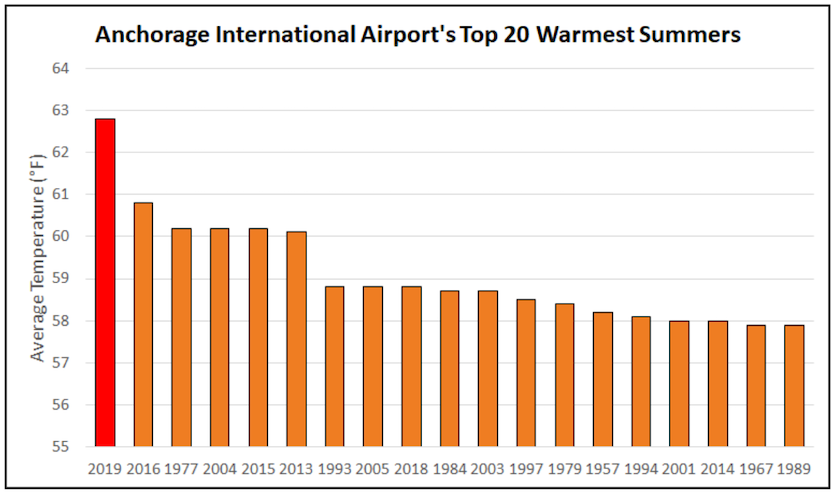
Alaska has its second warmest summer on record
Although August was another record breaker for Anchorage, a large portion of the state saw below-average temperatures in August that prevented this past summer from becoming the warmest on record for the state as a whole (the summer of 2004 still holds that honor).
Although the final data has yet to be released, it appears that the summer of 2019 will end up being the second warmest for Alaska since records for this began in 1925. It was, however, by far the warmest summer on record for Anchorage, with a June-August average temperature of 62.8°. This crushed the previously warmest summer of 2016 (60.7°) by a whopping 2.1°!
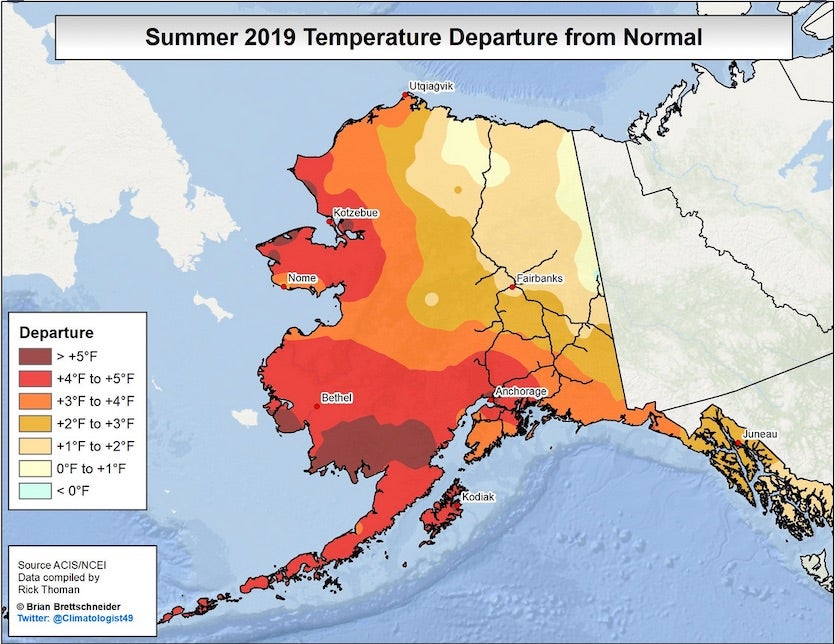
Incredibly, Anchorage has not had even one day with a below-average temperature since May 30. A statistic that really stands out (among many) is that Anchorage has had 31 days of temperatures 75° or higher so far this year. The previous record for this was just 15 (in 2015)!
It should also be mentioned that this has also been the driest summer on record for Anchorage, with a June-August precipitation total of only .90” (normal would be 5.86”). June with just .06” and August with just .04” were both the driest such months on record. It should be noted that August is usually Anchorage’s wettest month of the year, with 3.25” of rainfall. A serious drought continues in Southeast Alaska as well where Yakutat (1.05”) and Sitka (1.63”) also had their driest Augusts on record. [more]
Hawaii’s Warmest Summer on Record (and Alaska’s Second Warmest)
